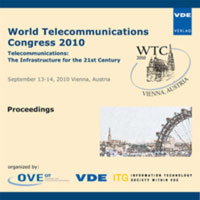Analyzing the Internal Processing of IMS-based and traditional VoIP systems
Conference: WTC - World Telecommunications Congress 2010 - Telecommunications: The Infrastructure for the 21st Century
09/13/2010 - 09/14/2010 at Vienna, Austria
Proceedings: WTC - World Telecommunications Congress 2010
Pages: 6Language: englishTyp: PDF
Personal VDE Members are entitled to a 10% discount on this title
Authors:
He, Yuheng; Veerkamp, Johannes; Bilgic, Attila (Institute for Integrated Systems, Ruhr University Bochum, 44780 Bochum, Germany)
Bilgic, Attila (Infineon Technologies AG, 81739 Munich, Germany)
Abstract:
The IP Multimedia Subsystem (IMS), specified by the 3rd Generation Partnership Project (3GPP) as part of Next Generation Networks (NGN), is used to reduce operational cost and provide converged services to its customers. The main protocol used for session control procedures is Session Initiation Protocol (SIP). Using Voice over IP (VoIP) as an example, we show that compared to the current system IMS can offer better data transmission services to real-time applications which benefits not only the IMS clients but also the IMS network provider. We focus on the registration and call session setup delay through the servers of both networks, without considering the end-to-end packet transmission over the wired or wireless link. The results show that registration time by IMS is longer than by traditional network because of the special structure of IMS core, but it demands less call session setup delay than current network. This means that in a keep-alive-communication, such as real-time streaming applications for voice and video over IP, IMS can offer advanced services with decreased session setup delay.


